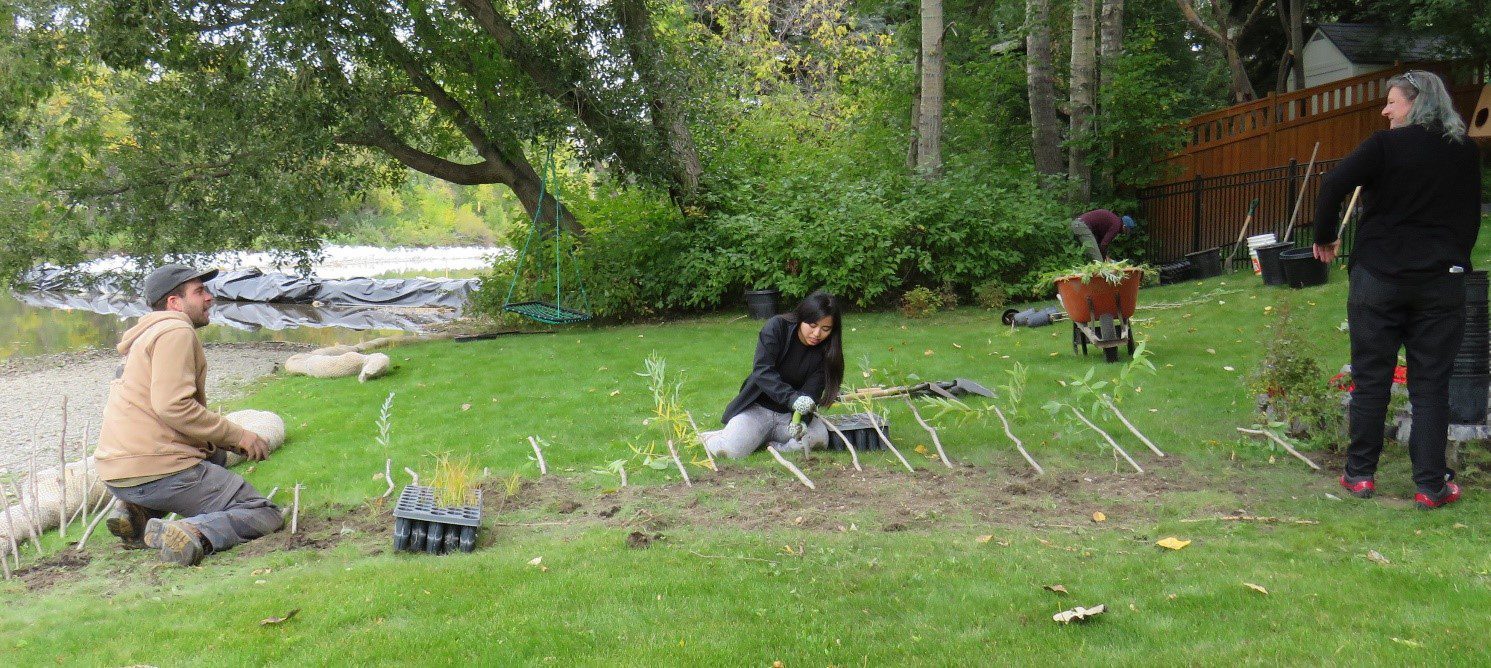Riparian zones are transitional areas adjacent to water bodies and the surrounding uplands. Human-caused disturbance and over-use of these areas can lead to the need for restoration work. A healthy vegetated riparian zone has many functions in the ecosystem of our rivers including building and stabilizing banks for erosion and sediment control; filtering and improving water quality; absorbing excess water and releasing it during dry periods; and reducing and dissipating stream energy
Riparian plantings are used to control erosion, stabilize banks, trap sediment, and to restore fish and wildlife habitat. Much of restoring healthy riparian zones includes reintroducing native riparian plants, shrubs and trees because they have deep roots that help prevent erosion. Many native plants also protect fish habitat by providing shade and cover.
A Four-Point Process to Help You Achieve a Riparian Restoration
Step One: How to determine if a riparian zone is healthy or unhealthy, and the suitability of your site for a riparian restoration.
- You will have to do a riparian assessment of your site to determine its health. This includes bare spaces on lawns, slumping/erosion of riverbanks, man-made retaining structures, biodiversity of plantings, health of your trees and shrubs, etc.
- You can use Cows and Fish’s online guides http://www.cowsandfish.org to determine the health of your site or contact Calgary River Valleys for help with your assessment.
- If your site has man-made retaining structures, please contact Calgary River Valleys for help.
Step Two: How to determine what approvals are required.
- You will have to determine where the Ordinary High Water (OHW) mark is on the site.
- A Water Act license needs to be obtained if planting on public land and land that is within the OHW.
- Any land between the Property line and the Water edge is Crown Land. The location of this edge will be indicated on the subdivision plan for your property.
- BEFORE YOU DIG: Contact Alberta One-Call 1-800-242-3447 to do buried line locates for your site. albertaonecall.com
Step Three: How to determine what the new design could/should be, including the removal of existing landscaping
- You will need a new design of your riparian zone based on its health, and the planting choices available to you to ensure the right plants are placed in the right areas. Water loving plants, shrubs and trees should be placed where they can thrive, with sedges and willows closest to the water and shrubs and trees farthest from the water.
- Contact a local native plant nursery, or native plant designer to create a planting plan for your site or design it yourself. Native plant nurseries can provide cuttings/live stakes, seeds, and advice.
- You will have to determine which plantings need removal, and how you will dispose of them. Some removed vegetation should not be composted.
Step Four: Considerations for your planting including when best to plant, how to plant on sloped riverbanks, and tools required.
- Spring plantings will develop a root system before winter. Moist soils provide ideal conditions for seedling growth.
- Fall plantings protect the riverbank during spring runoff, and cuttings are able to grow before weeds start to come up.
- Water will run off a steeper slope and not soak into the soil for the new plantings. Create a trap for water in front of the planting by digging a ridge on the downslope to trap water.
- Tools needed may include tree planting shovels, augers, wheelbarrows, gardening gloves, gardening shears, steel-toed boots, and water hoses or buckets. If removing retaining structures, industrial equipment may be advised.
Calgary River Valleys can walk you through these steps. Please contact Calgary River Valleys at [email protected] for assistance in assessing the suitability of your site, and guidance through the process. A consulting fee may be applicable based on the scope of your project. (Prepared for and funded by The City of Calgary Water Resources, and Calgary River Valleys.)









